Back from Morocco, we continue our travelogue series today to walk you through the trip, picking up the trail in Erfoud, a beautiful little town on the edge of the Sahara.
Erfoud Musician
We’d spent the morning in a local market photographing the people there, like the young man selling scarves, that we saw at the end of part two of this series. We then went for lunch, after which three musicians came into the courtyard where we were to sing for us. We see one of them in this first photograph for today (right).
Although there is an obvious tourist attraction element when these musicians play for us, I actually really enjoy it. Their songs and melodies are a great way to really feel the culture of a place. I shot some video on my iPhone that I’ll include in a slideshow perhaps at some point, but for now, listen to a short excerpt from their song, to hopefully put you in the moment a little better.
[Listen with the audio player at the top of the post to hear the music]
Perhaps the music wasn’t quite what you were expecting from the photo, but hopefully, it gave you a better sense of the atmosphere. This is a typical rhythm too, with the Krakebs, which are a type of metal castanet, making that distinctive sound like a galloping horse.
The light was also somewhat challenging in the courtyard, as there were lots of small holes in the vine above, so I exposed the image to ensure that these spots didn’t blow-out, and then I increased the shadows to around 70 in Capture One Pro to bring back the shadow detail. I find this works better than allowing the highlights to blow-out and then bringing them down, because once the detail is lost in the highlights you end up with just a white spot, regardless of how much you try to recover it.
After lunch, we were met by our 4×4 drivers, and transported into the desert to our camp for the next two nights. The luxury tents weren’t quite as luxurious as they promised to be, although very nice to say we were in the Sahara, and the sand dunes near to our camp were a little bit of an anticlimax. This is one of the problems with a first-visit trip planned on paper, but also the reason why I priced this first tour as I did.
Sahara Sand Dunes
I had been told that this was a great camp because it wasn’t teaming with tourists, but there is a reason it’s not teaming with tourists. It’s because it’s not very interesting. We took a walk into the dunes behind our camp, and photographed as the sun went down, but the relatively small dunes were scattered with clumps of grass that made them very unphotogenic in my opinion. I would fix that for the following day with some adjustments to our plan, but for now, the following photograph is one of the few images I was somewhat happy with from this shoot (below).
Because the larger scene wasn’t that pretty, and because I often do this anyway, I decided to zoom in capture some details. I shot this at 400mm with my 100-400mm lens, and just showed the layers of sand, with the ripples from the wind, and kind of made a bit of an accent out of one of the clumps of grass that was for me at least, pretty much spoiling the location.
I was in two minds as to whether to go back out at dawn, but it’s not every day you wake up in the Sahara desert, so a few members of the group and I went back out the following morning, using flashlights initially to navigate our way back into the dunes. The soft morning light just about makes this particular scene (below) bearable for me to show you, and hopefully, this will also give you an idea of the scale of the dunes.
I kind of like the rosy orange color here, and the undulating lines are nice too, but if I didn’t need to show you where we were, I’d probably never show this photograph to anyone. At least at dawn though, the angles where there wasn’t so much grass were a little more photogenic, making the location a little more bearable.
Nomadic Lady
After breakfast, I changed our plans and arranged for the 4×4 vehicles to come and take us to a different area, with the promise of better dunes. We adjusted our plans to have some camel handlers in the new area, and set off, initially visiting a nomadic family, where I photographed this lady in the shade of structure next to the main cabin.
This lady was difficult to photograph, probably somewhat shocked to have a group of photographers turn up on her doorstep in three 4×4 vehicles, it was a nice little stop.
As we’d become conditioned, we paid her a tip for her time, and just as we were about to leave, and the other two cars pulled away, and we were just saying that in Namibia we take more practical supplies to these people, then our driver got out and gave her a case of water and some butter.
Although not always possible, or even necessary, this seemed a much more appropriate way of thanking this lady for her time and cooperation, and I would imagine much more appreciated.
White Turban Musicians
After this, we drove through to a town on the other side of the dunes from where we’d stayed and stopped for a restroom break at a little oasis, where we found some wonderfully charming men to photograph.
To make it easier to format the blog post, I’ve created a tryptic of my favorite three images (below), rather than adding each image individually. I had the gentleman on the left stand in front of the Moroccan flag on the wall, making for a very striking background and wonderful contrast between the red and the white of his turban.
The light was beautiful, with the men in the shade, but a very brightly lit courtyard behind us, so they each have really nice catchlights in their eyes, and the light is much less contrasty than if we’d had them stand in the sun. I opened up my aperture as far as it would go, which is f/4 on my 24-105mm lens, and that gave me just about the shallow depth of field that I was hoping for at this distance.
Photographer’s Friend Pixel Peeper Mode
Using my app Photographer’s Friend in the new Pixel Peeper mode, I was able to calculate that I had probably around 1cm or 0.35 inches of totally sharp depth of field, and on inspection at 100% on the computer screen, that looks pretty accurate, although you’ll think the depth of field is a little deeper when viewing the web sized images. With the Pixel Peeper mode turned off, Photographer’s Friend reports around 2.5 cm or one inch of depth of field, which is probably closer to what you’ll see here, so I’m pretty pleased with the calculations and having the options to quickly switch now. For more details on the Pixel Peeper mode that I just released last week, see the Photographer’s Friend page here.
Camels in the Sahara
After a long relaxed lunch to burn off the midday sun, we headed back out in the 4×4 vehicles and photographed the oasis, before meeting with our two camel handlers, and actually riding the camels into the desert to photograph them. As you can see (below) on this side, the dunes were much more, well, dune-like, and having the camels and their handler to pose for us made this a great opportunity.
The dunes weren’t perfect, especially in the wider view, but I thought this scene was worth spending a few minutes to clean up some of the clumps of grass from the original image, just to polish this a little. I used both my 24-105mm and 100-400mm for this shoot, and for this, I was working with a focal length of 200mm, to isolate the subjects and to compress the elements of the scene a little for a more dramatic look.
Although I directed the shoot, as far as where we stopped, and where the camel handler walked for us, being accustomed to having his photograph taken like this, when there was a pause in the shooting, the camel handler wrapped his headwear around his face, and sat in front of his camels for this next photo (below, left).
I was thinking it was quite a nice pose, and then he had the front camel sit and he leaned against it, for this second shot (above, right). He also laid down for a third pose, but I prefer these first two images. Both of these were shot around 200mm, and I stopped down the lens to f/11, so that the camels were also relatively sharp. In the shade at this point, that gave me an ISO of 4000, although there’s no grain in the images because I was exposing them with the information over on the right side of the histogram.
This next photograph (below) is one of my favorites from the entire trip, as we had the camel handler walk the camels around and over the brow of a dune to the right of where we were standing. As you can see, there was now a little red in the sky too, as the sun neared the horizon.
I allowed this image to go to near silhouette, but I decided not to plug up the shadows complete, so you can still see a bit of detail in the animals and this side of the dune. Due to how tightly the camels were tied together, it was actually more difficult than I’d hoped to get a shot where there was separation between all of the camels, but this is one of them, which contributes to my reasons for making this a favorite. I shot this at 35mm, with the aperture set to f/10, and my ISO was at 500 for this image.
Color-wise, this next image is much better, but there isn’t any separation between some of the camels here, and I’m sure you’ll agree that this kind of messes it up a bit. Still, I’m happy with these shots on the whole, and the group was probably the most excited that I’d seen them as we worked this location. You probably can’t tell as this is now almost complete silhouette, but this is a different camel handler, in blue, as opposed to the white clothes of the other handler.
OK, so as the sun goes down in the Sahara, we’ll start to wrap it up there for today. I have another 10 shots or so that I’ll share with you in the concluding episode of this travelogue series, probably next week.
Morocco 2018
Join us on the 2018 Morocco Tour from Nov 12 – 23! For details and to book your place, please visit the tour page.
Show Notes
Subscribe to our Tours & Workshops newsletter here: https://mbp.ac/news
Subscribe in iTunes for Enhanced Podcasts delivered automatically to your computer.
Download this Podcast in MP3 format (Audio Only).
Download this Podcast in Enhanced Podcast M4A format. This requires Apple iTunes or Quicktime to view/listen.

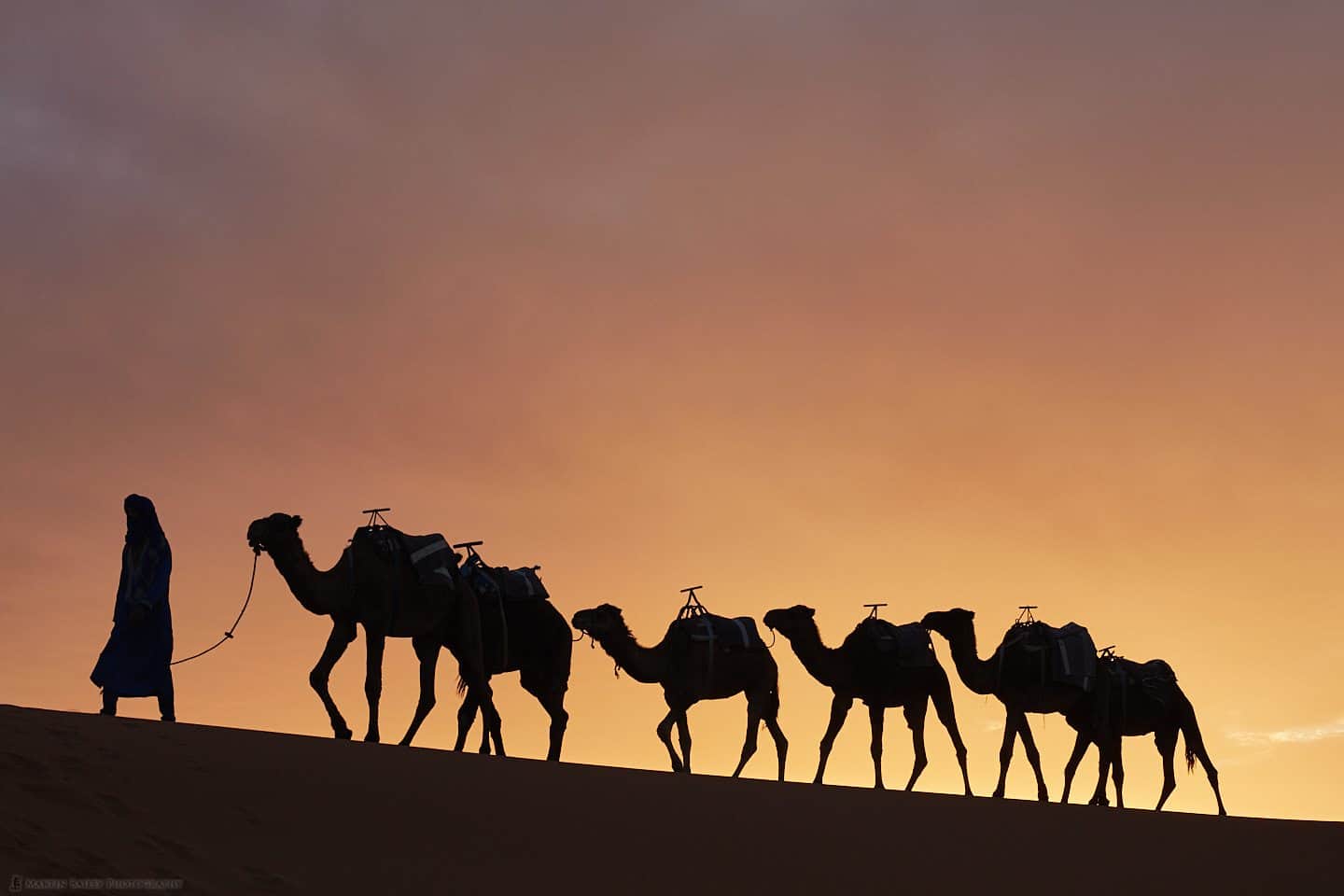
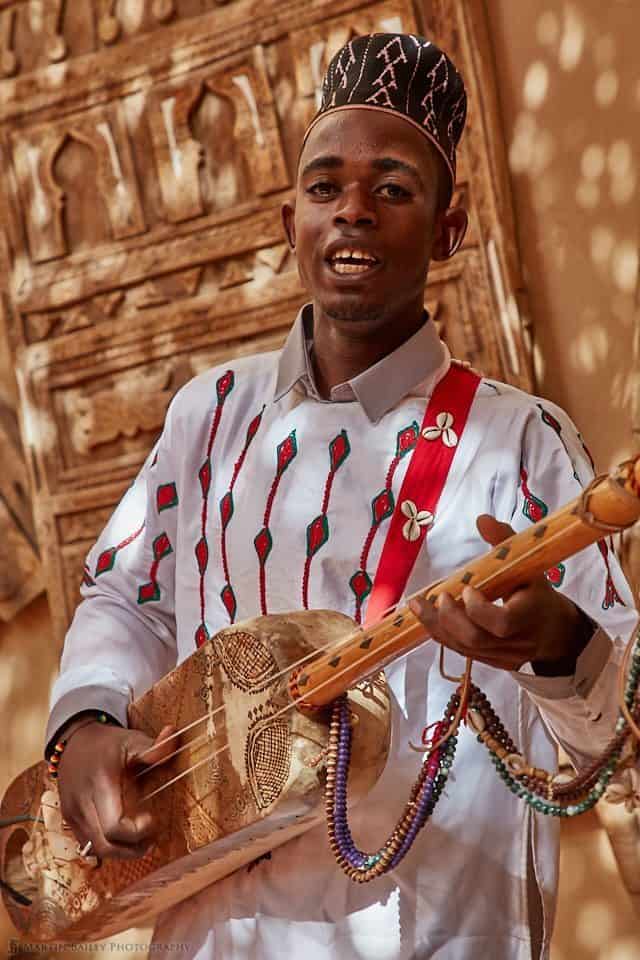

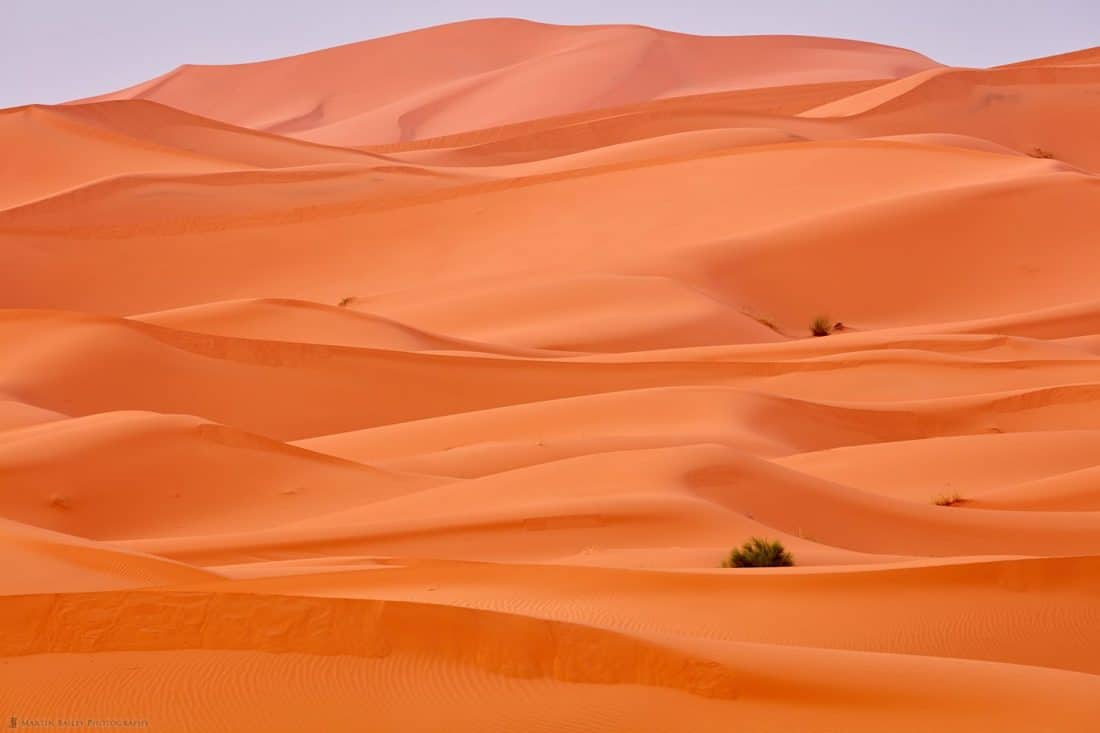
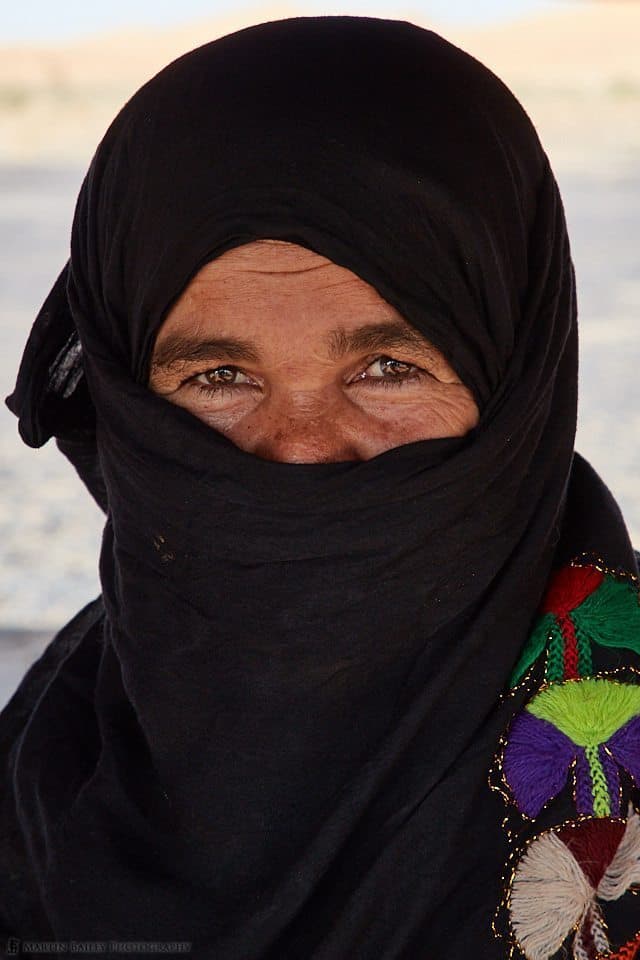
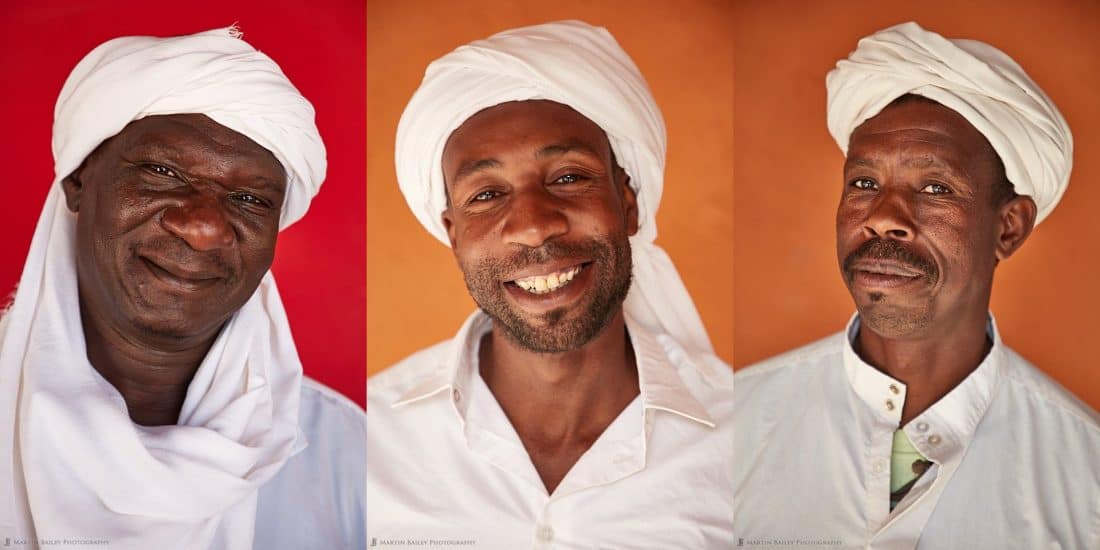
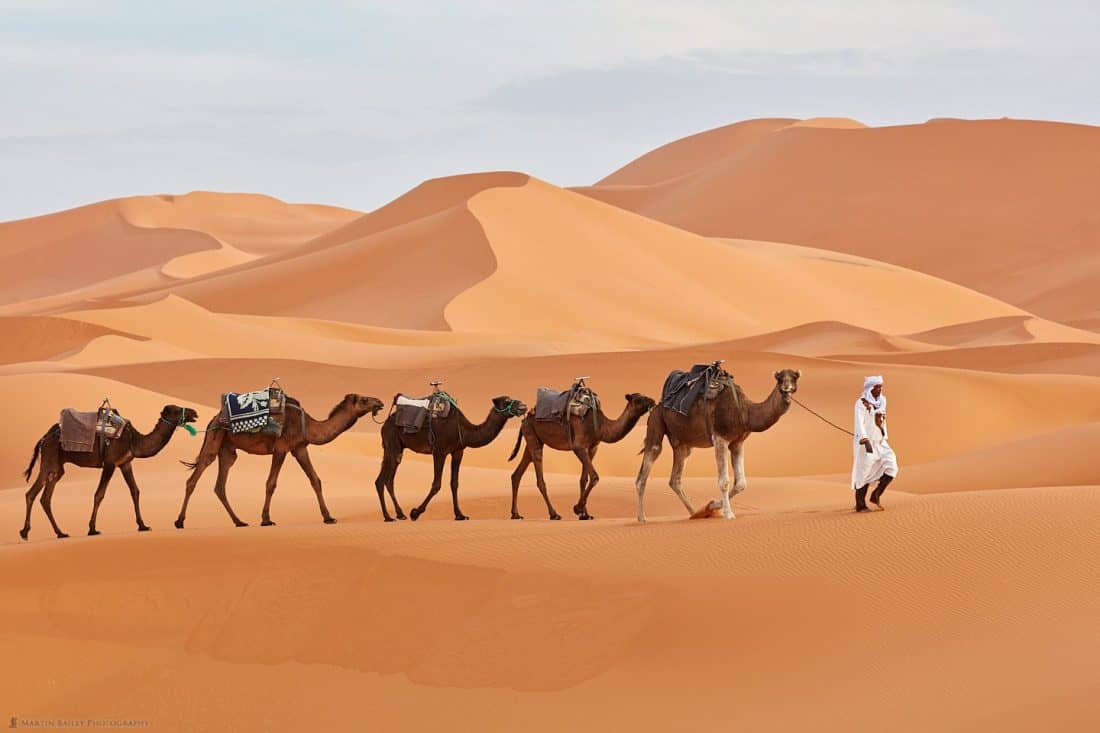
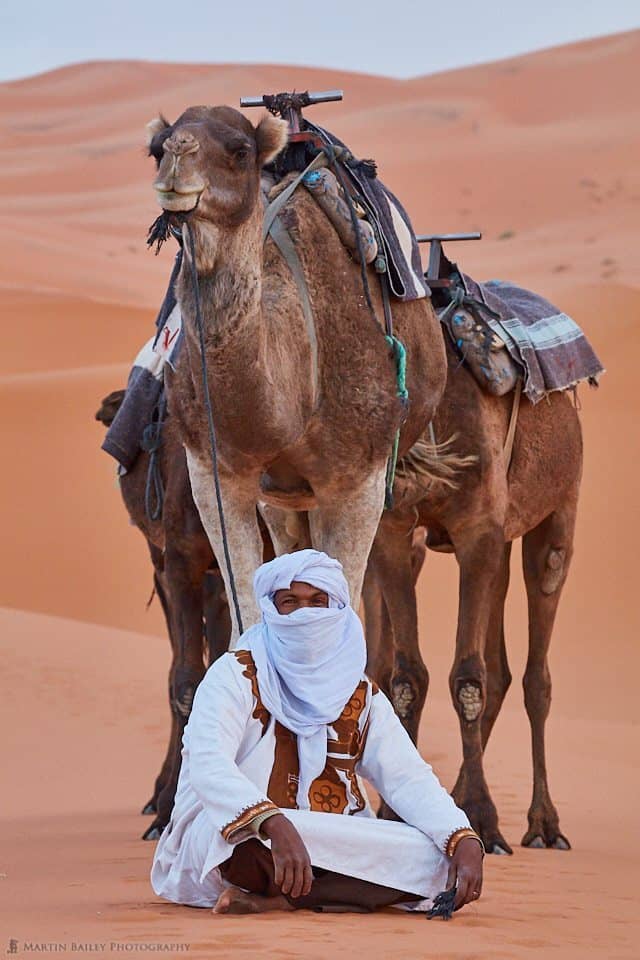
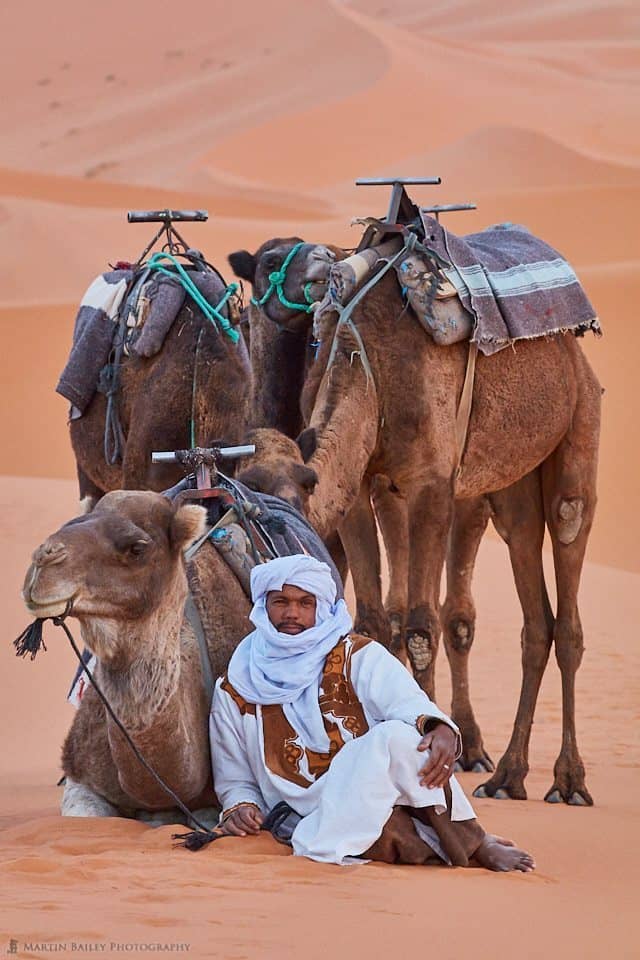
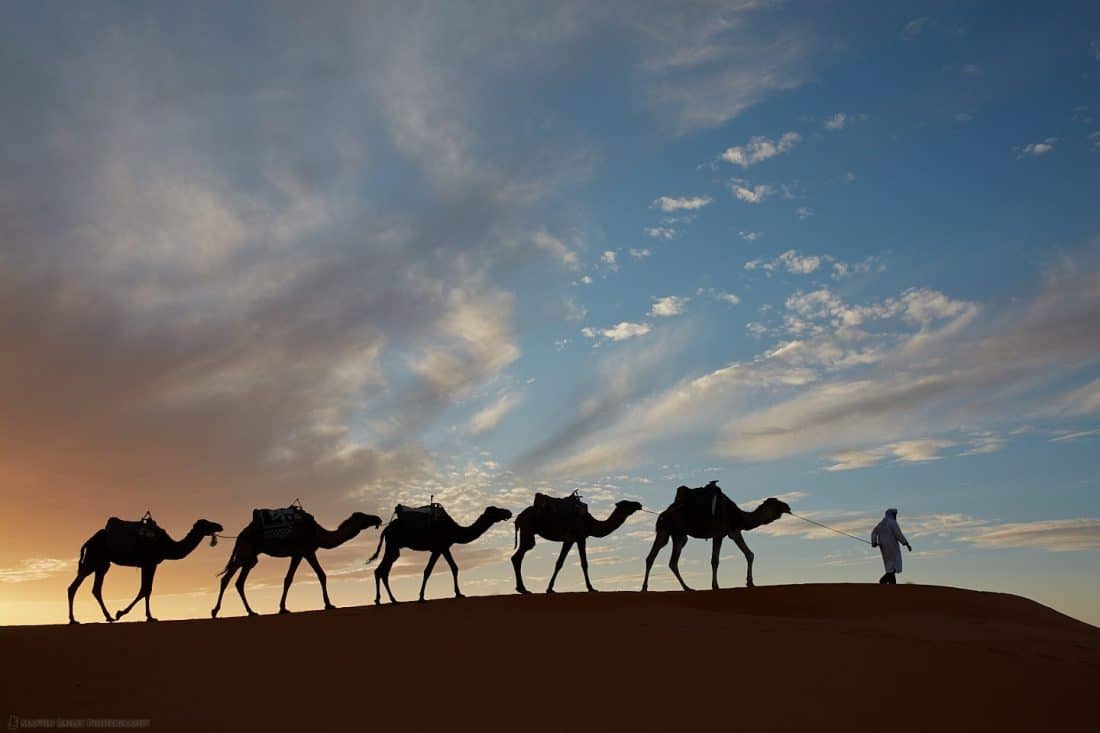

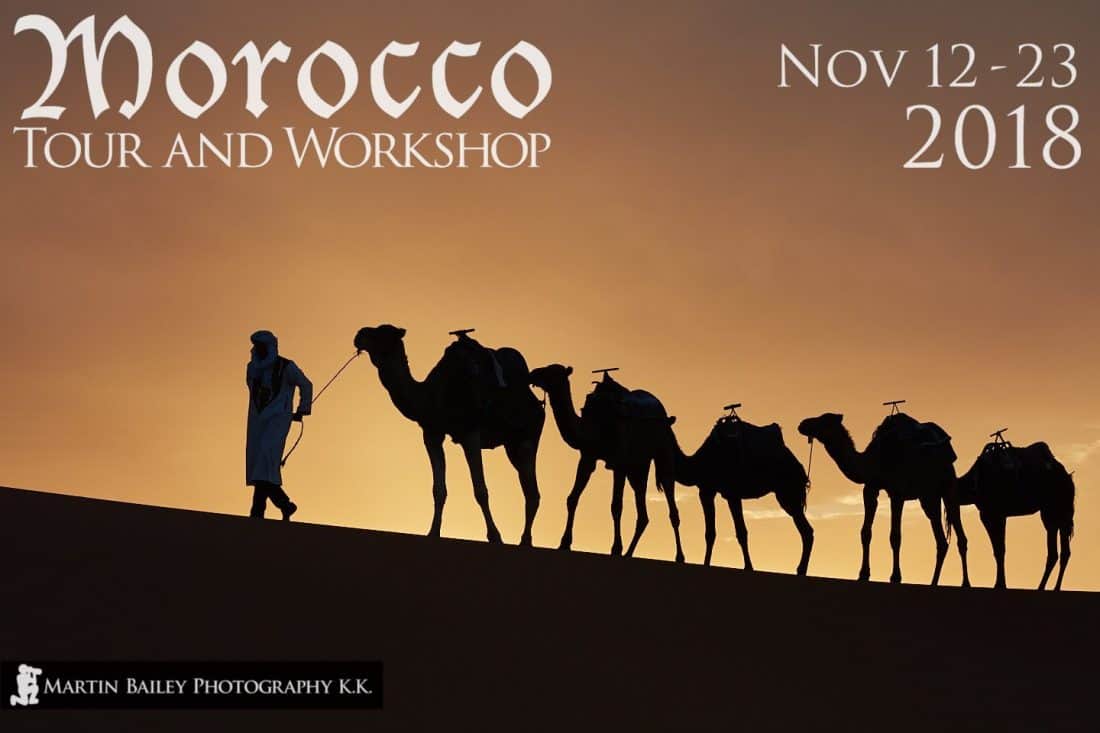

Hey there, Martin! Once a again a very interesting travelogue. I have a question though. How did you go about changing lenses in the desert with so much sand flying around (as I imagine). Do you have a technique to keep dust from the sensor? Or do avoid changing lenses by using two bodies?
Thanks for your time answer.
Cheers,
C.
Hi Christian,
Thanks for stopping by and commenting.
I did use two bodies, but initially, I only planned to use the 24-105mm, so the 100-400mm was not attached to a camera. I rarely let conditions stop me from taking off the body cap and attaching a lens, or changing lenses for that matter. I do try to be proactive and couple my second body with a required lens beforehand when possible, but I’m not afraid to change in the field when necessary.
All I do is try to put my back to the wind, and shield the lens change, and then just hope for the best. And, I’ve actually not really had any problems. I almost didn’t get the sensor cleaned after Namibia this year because there wasn’t a lot of dust in there. I did get them cleaned for Morocco, but I don’t think I’ll bother before my winter tours start. Probably just blowing them out with a blower will be enough.
In short, I guess to me getting the shot is the most important thing. If I did end up with a bit of dust on the sensor, I’d live with that until the end of the trip, or try cleaning while on the road, but it would have to be really dusty, like unusably dirty, before I’d try to clean the sensor myself while traveling.
Regards,
Martin.
3 Musicians: I can’t figure out why you wanted so little depth of field. The background appears completely uncluttered. Can you explain? Thanks!
Hi Monica,
Good question, thanks!
So, the first thing is that although the background was uncluttered, it had more texture than I wanted to capture. It’s just a beautiful wash of dappled color in the photos, but if I’d stopped down and made it sharper, there would have been more defined texture, which I didn’t want.
But, the main goal for me is that I like to draw the viewers eye to the facial features, and if the rest of the person in the photograph is crisply sharp, you lose that a little. The back edge of their turbans getting slightly soft helps to soften their outline, and I just find that aesthetically pleasing.
Actually, please don’t think of shallow depth of field simply as a means to hide a cluttered background. It’s an aesthetic tool that can be used in any conditions, and if you have a cluttered background, it’s always better to find a better background than simply try to blur it out. These three gentlemen are against these beautiful backgrounds because I asked them to move into the shade and stand there.
I hope that helps some.
Regards,
Martin.
Thanks Martin. Just a few words from you are going to change a lot of my pictures! You’re the best!
That’s good to hear Monica. Thanks for asking great questions. 🙂
All the best for 2018!
Martin.